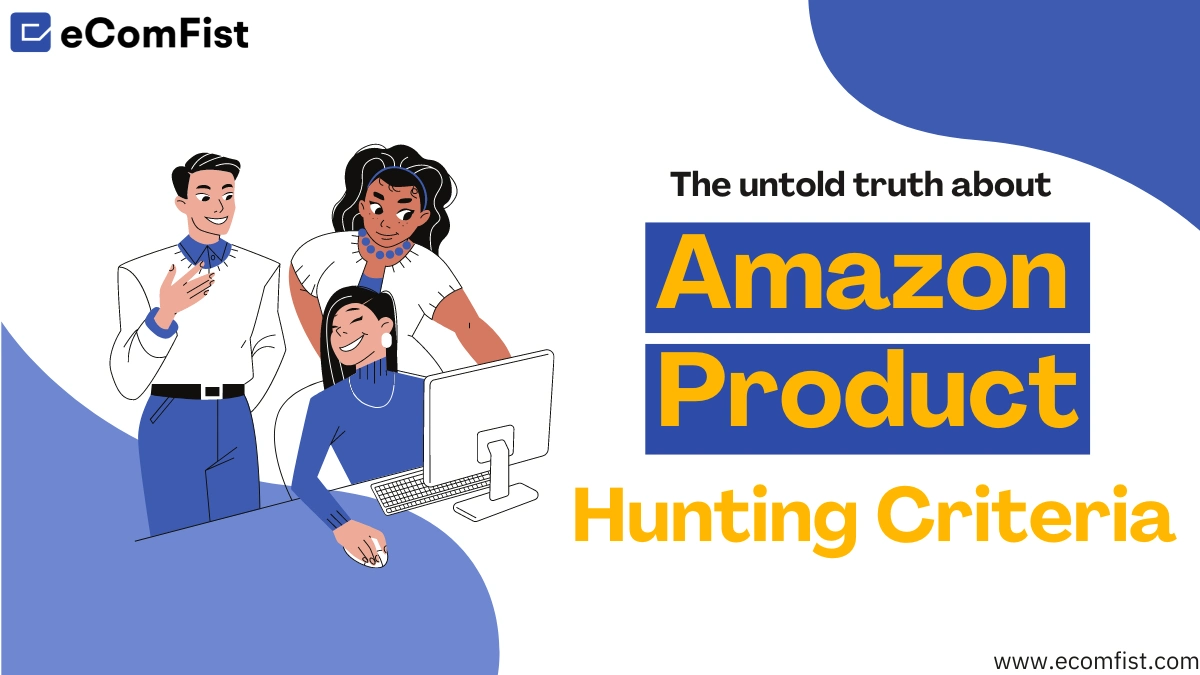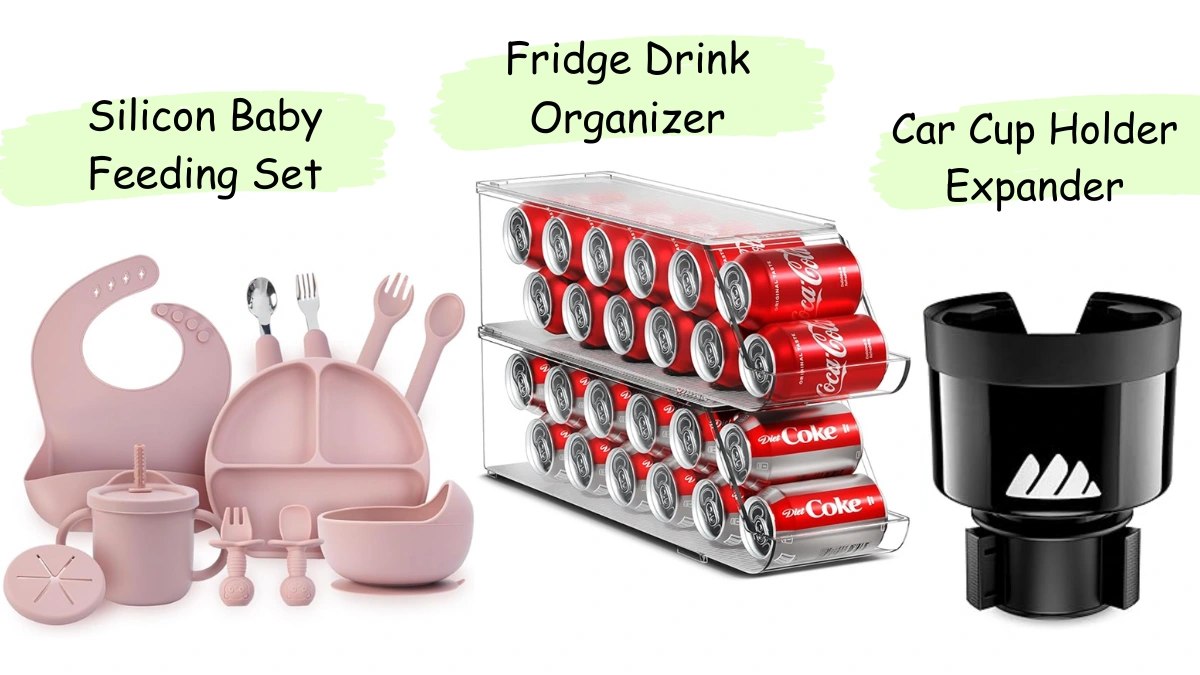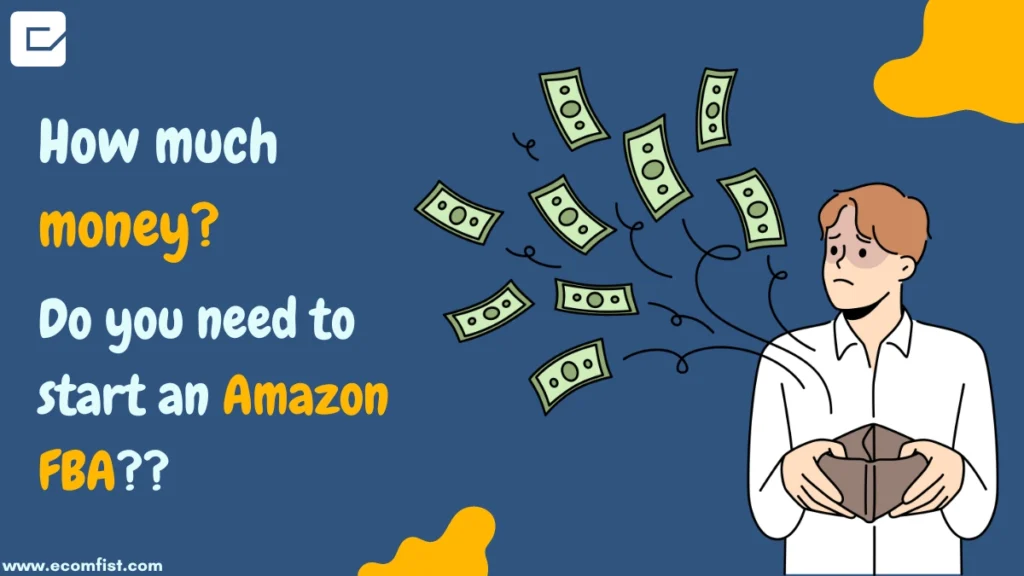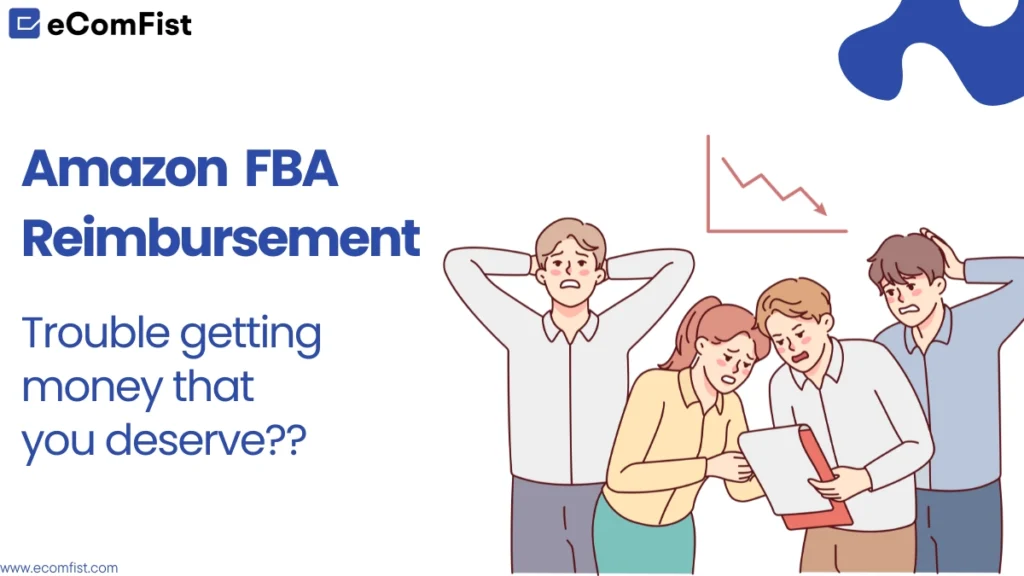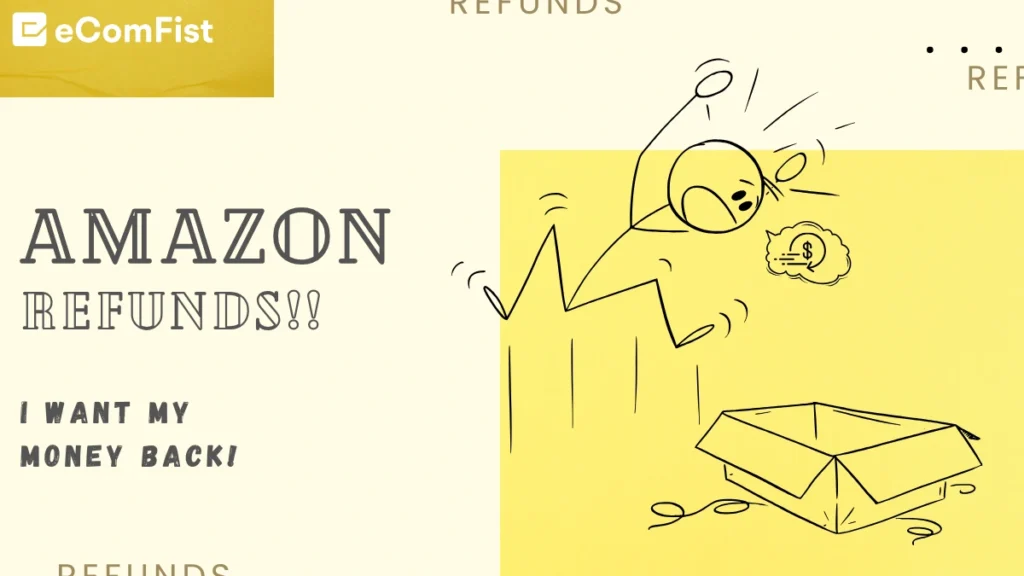Think of Amazon FBA as renting a storefront in a bustling shopping mall. Sure, it’s a great space with tons of foot traffic, but at the end of the day, it’s still the mall’s business. You pay rent, you advertise your products, and you handle all the behind-the-scenes stuff like manufacturing and sourcing.
The hitch is that if your product isn’t flying off the shelves, you’re not pocketing much profit because Amazon’s fees and returns eat into it. Plus, if you’re selling the same old thing everyone else is or the market is flooded, you’re stuck in a price war where nobody wins. And don’t even get me started on low-quality stuff—that’s a one-way ticket to bad reviews and a sinking seller rank.
In the end, if your sales are sluggish and you’re shelling out cash left and right, you’re basically spinning your wheels. Your Amazon FBA private label might feel more like a dead-end job than a money-making venture. Because of this, it is essential to do a thorough job of Amazon product hunting; ideally, you would find something that is selling like hotcakes online.
What is Amazon Product Hunting?
Amazon product hunting is all about finding and identifying profitable products to sell on Amazon. It involves a series of important steps to ensure the product you choose is successful. These steps include thorough market research, analyzing the competition, sourcing reliable suppliers, and checking customer reviews, among others. By following this process, you can find a product that meets specific criteria to become profitable on Amazon’s marketplace.
Basically, the idea is to find a product that ticks all the boxes of Amazon product hunting criteria to ensure it’s going to make you good money. Because if it doesn’t make a decent profit margin, what’s the point? But hey, we’ll get into that riveting topic later.
How to hunt profitable products on Amazon?
You can hunt profitable products on Amazon by following the given criteria. The following is the fundamental Amazon product hunting criteria that you will find everywhere on Google: hear from the Amazon gurus; the YouTubers will bombard you with them; and so on and on. The criteria are as follows:
- Seek products with consistent and high demand. (Use tools like Helium 10 to check sales rank and monthly sales volume.)
- Stay away from saturated markets ruled by big brands. (You don’t want to be a small fish in a big pond!)
- Shoot for a profit margin of around 30% to 35% after covering all your costs. (That’s where the sweet spot is, but realistically, you’re looking at 15% to 20%.)
- Stick to price tags between $15 and $50. (It’s the sweet spot for both your customers and your wallet. (The high price range needs your investment and customer trust.)
- Go for smaller, lighter items to keep shipping and storage costs down. (Think light and compact!)
- Aim for products with fewer than 1,000 reviews to avoid fierce competition. (You don’t want to be fighting an uphill battle.)
- Opt for products that sell consistently throughout the year. (No seasonal rollercoasters here!)
- Unless you’ve got the green light, steer clear of restricted or gated categories.
- Choose suppliers with a solid track record of quality and reliability. (You want partners, not problems!)
But you may be wondering whether following Amaozn product hunting criteria guarantees you success in the long run.
Does following Amazon product hunting criteria guarantee success?
No. If you follow this criteria strictly, it would increase the probability of success, but it can’t guarantee success. It’s true that success on Amazon hinges on choosing the right product, but it doesn’t entirely depend on it. There are other factors at play, like how much you spend on PPC, your customer service quality, and external market conditions that you can’t control. Furthermore, competition and consumer preferences are constantly changing, which can impact how well your products perform.
Here’s what I want you to focus on: competition and marketing strategies. As a beginner, you might feel like you can’t control these aspects, but what if you could learn from others’ experiences and get ahead of the game? I’ve already shared the best marketing tips in the blogs below.
- Top sponsored product ad placement hacks
- Amazon sponsored brand ads: 5 must-see trends you can’t miss
- 7 most profitable Amazon PPC campaign secrets you should know at all costs
Now, let’s dive into how you can control the competition.
Let’s shed light on the two important things you are going to encounter as a new Amazon seller.
1. New Sellers Joining the Amazon Marketplace at a Fast Pace
It’s crucial for you to understand this because it’s something you won’t hear from everyone else about the Amazon FBA private label business
Amazon is seeing a dramatic increase in new sellers entering its marketplace.According to MarketplacePulse on April 23, 2024:
Every day, over 2,000 new sellers join the Amazon marketplace. But shoppers might not notice this growth. Source
- Since 2018, Amazon has added nearly 5 million sellers, with around 40% joining in the U.S. marketplace.
- The Amazon’s vast scale is mostly hidden from shoppers, as they rarely look beyond the first search results page.
- Amazon’s growth in sales is no longer about increasing the number of sellers but rather the competition among sellers for visibility.
- The top 1% of sellers, who have been on Amazon for years, generate at least half of the sales volume and are crucial to the marketplace.
- New sellers join daily, but many never get a single order. However, about 35% of new sellers succeed, replacing those who stop selling.
- Despite changes in registration processes, fees, and competition, sellers continue to flock to Amazon, indicating the business model remains popular and full of opportunities.
2. Emerging Competition
Have you noticed how quickly new sellers are joining Amazon? It’s staggering—2,000 new sellers every day. That’s no joke. Competition in every category is constantly increasing, like water overflowing a dam.
Here’s the deal: Amazon private label isn’t truly your business unless you’re making huge sales. Why? For the simple reason that Amazon controls both the platform and its enormous user base. They’ll charge you substantial monthly fees for blessing you with this opportunity—referral fees, commissions, seller account fees, storage fees, FBA fees, and more.
If you’re not generating significant sales, you’ll end up in a cycle of manufacturing, shipping, spending on PPC, dealing with returns, and ultimately making no profit. You can end up losing money or just breaking even. In short, you need to pick products with the potential for high sales to cover those expenses. This way, you can say that Amazon private label is yours.
Even if you go with a product that doesn’t have much competition at first, you could end up in a price war later on because competition is always rising. This will drag you back into the breakeven and loss cycle.
Control the competition: Choose the product that’s not easy to copy
Let’s break down some key points about Amazon product hunting criteria. You want products with high demand, low competition , high profitability, huge improvement potential, and easy to sell.
You can forget about low competition because every category is a battlefield. Demand matters only if a product meets the criteria of “improvement potential” and “easy to sell”.
Now, let’s talk about “Easy to sell.” Easy to sell is crucial too. Now, when we say “ease to sell,” we mean products that are lightweight and easy to ship. But remember, it’s not about finding those products that are easy to find, easy to ideate, easy to manufacture, and slap your label on. If a product is too easy to get, it likely lacks huge improvement potential to the extent that customers find it innovative.
In short, you don’t want to end up selling something that’s essentially a copy-paste of what’s already out there on the market. These kinds of products won’t bring you long-term profits and will leave you stuck in a rut of disappointment because new sellers are bringing the same product to the market. If this happens, your options are to either spend a fortune on PPC ads or sink to the bottom of the Amazon search engine results page, where no one wants to go.
Plus, when there’s fierce competition, especially from Chinese sellers undercutting prices, it’s tough to stand out. So, focus on products with real potential for improvement and ones that aren’t oversaturated in the market.
Don’t ever fall into the “easy to sell” product trap.
Let’s understand this point with examples.
There’s a YouTube video by JungleScout that spills the beans on how to choose products to sell on Amazon. They walk you through the whole process, using specific products they find based on their special product hunting criteria. Now, if you take a good look at their Excel sheet, you’ll see they’ve got these products neatly listed out. But here’s the kicker—they all fall into the “easy to sell” category. Sure, they might have decent daily sales and revenue, but when it comes to net profit, it’s just so-so, or even downright low.
This is a common trap for newbie sellers. Exhausted from searching for products with substantial improvement potential, they end up lured by these easy-to-sell products. They think, “Well, this product ticks all the other boxes, so why bother with improvement potential that could take their huge time?” But truth be told, these products are super easy to sell and manufacture, but their improvement potential? Zilch. Seriously, every Tom, Dick, and Harry can churn these out and put them on the market.
Let’s brainstorm some potential improvements for these products:
Silicon Baby Feeding Set
- Add additional features, like spill-proof compartments or interchangeable parts for versatility. (Already Existing)
- Offer customization options, such as color choices or personalized engraving.(Already Existing)
- Enhance the design to make it more ergonomic or aesthetically pleasing. (Quite usual idea)
- Include educational elements like alphabet or number imprints to make feeding time engaging for children. (Easily replicable).
Fridge Drink Organizer
- Design modular components to allow for customizable storage configurations.(Easily replicable)
- Incorporate temperature control features to keep beverages chilled or heated. (Easily replicable)
- Enhance durability and sustainability by using eco-friendly materials or offering a long-lasting warranty. (Already Existing)
Car Cup Holder Expander
- Develop adjustable sizing options to accommodate various cup and bottle sizes securely. (Already Existing)
- Integrate USB charging ports or wireless charging capabilities for electronic devices. (Useless)
- Implement anti-slip features to prevent items from sliding or tipping while driving. (Already Existing)
- Offer multi-functional features such as extra storage compartments or built-in phone mounts for added convenience, (Useless because car has already contains a phone compartment.)
If you browse Amazon for these products, you’ll notice long-time sellers racking up sales and countless new sellers with similar variations. Take the baby feeding set, for instance. It’s made of silicone, so what can new sellers really innovate? Maybe add a lid, some compartments, or a different type of baby spoon, but that’s about it.
You will notice the huge price war for silicon baby feeding sets on Amazon.
Has anybody told you about such product-hunting traps you fall for easily?
What’s the solution?
Ask yourself, ‘Why the rush to launch your product on Amazon?’ Seriously, why not take the time to ideate, create, and innovate a product that truly stands out and adds real value to customers’ lives?Finding such a product depends entirely on the depth of your research. Aim for something you can patent, something that will sell like hotcakes. I’ve already written a detailed blog on how to differentiate your product on Amazon, focusing on addressing customer pain points with real solutions.
Join forces with Ecomfist and claim your free consultation today! Discover how we’ve successfully differentiated our products on Amazon and learn how we can achieve the same success for you. Let’s turn your Amazon business into a standout success!
Frequently Asked Questions
How Much Does It Cost to Sell on Amazon for Beginners?
New Amazon sellers can start with $3000 but make very little profit. It is better to invest $5000 with a good profit margin. The first big expenses are landing costs and inventory costs. New Amazon sellers must pay a subscription fee of $0.99 per item for an individual and $39.99 for a professional seller account. Sellers must also consider referral fees, which vary by category and range from 6% to 45% of the product’s sale price.
Similarly, if you utilize Amazon FBA, fulfillment fees cover storage, packing, and delivery. PPC, product photography, packaging, and inventory investment are other costs. So, plan for these expenses to minimize financial surprises and ensure a smooth launch.
Which Tools Are Used for Product Hunting on Amazon?
Product hunting on Amazon is a critical task for sellers aiming to identify profitable niches and products. Several tools can help streamline this process, with Jungle Scout and Helium 10 being among the most popular. Jungle Scout provides data on sales estimates, revenue potential, and competitive analysis, helping sellers make informed decisions. On the other hand, Helium 10 offers a suite of tools, including keyword research, trend analysis, and inventory management, making it a comprehensive option for product research.
Other useful tools include AMZScout for competitor analysis, Keepa for tracking price history and trends, and Viral Launch for market intelligence. Using these tools effectively can significantly enhance a seller’s ability to find winning products.
Which Products Are Most Sold on Amazon?
The products that sell the most on Amazon vary based on trends, seasons, and consumer demand. However, some categories consistently perform well. Electronics, such as smartphones, headphones, and smart home devices, are constant bestsellers. Health and personal care items, including supplements and wellness products, also see high sales volumes. Likewise, home and kitchen products, like organizers, kitchen gadgets, and cleaning supplies, are popular due to their broad appeal and frequent use. Similarly, books and media continue to be strong sellers, thanks to Amazon’s roots as an online bookstore.
Moreover, seasonal items, such as holiday decorations or back-to-school supplies, spike in demand during their respective times of the year. By keeping an eye on current trends and consumer preferences, sellers can identify high-demand products to stock.

